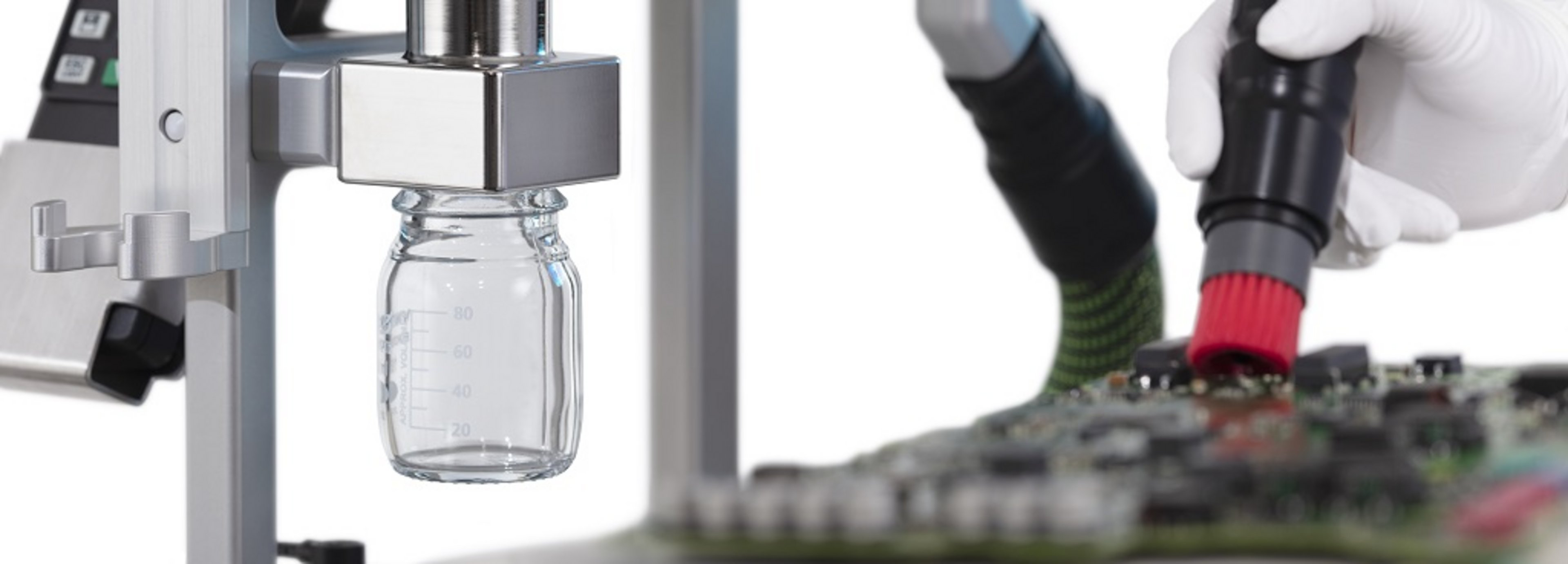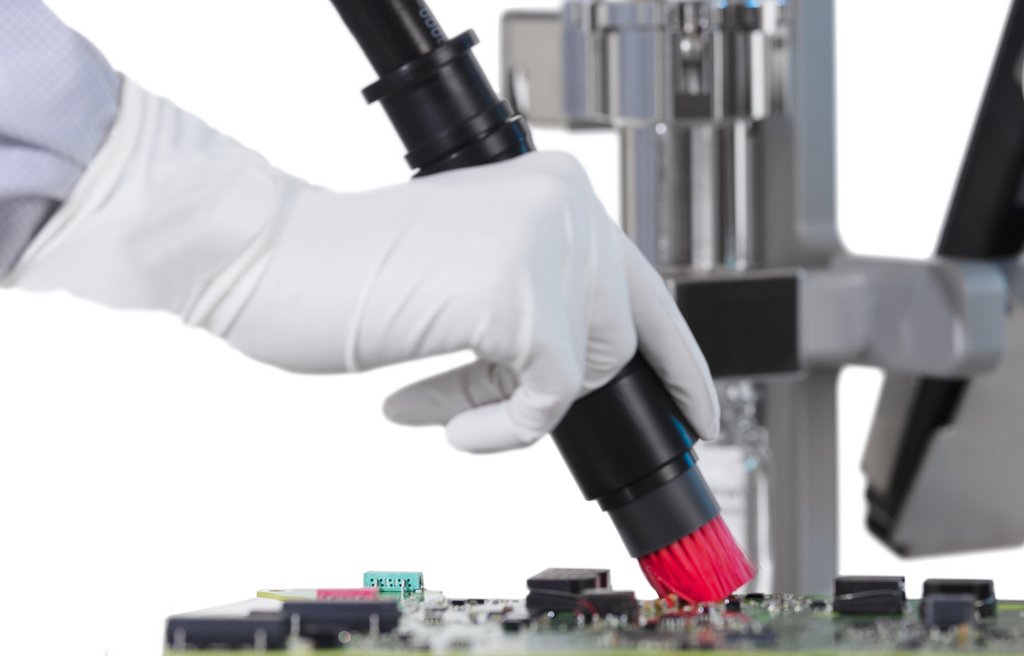(Brush-) suction extraction of the new VDA 19.1 (2025)
(Brush-) suction extraction in the new VDA 19.1 (2025)
What is the significance of volume flow measurement and which parameters must be observed?
The upcoming third edition of VDA 19.1, which has already been drafted and will be published in its final version at the end of 2025, brings with it some significant innovations. In particular, (brush) suction extraction will be added to the dry extraction methods as an extension of the test procedures with regard to the new range of components in the wake of the shift to e-mobility and autonomous driving.
The new VDA 19.1 defines its own start parameters for this, including the volume flow of the extraction system.
Below you will find the most important points from the draft of VDA 19.1 regarding the significance, technical relevance, and parameters to be observed:
Technical relevance in the implementation of normative requirements
Verification of the extraction effect:
- The new VDA 19.1 requires a decay measurement to check whether the volume flow during extraction was sufficient.
- This measurement serves as proof that the particles were effectively absorbed by the suction flow.
Standardization of parameters:
- The aim is to ensure comparability between different laboratories and systems.
- Volume flow measurement is included in the test reports as a quality-relevant parameter.
Integration into factory standards:
- (Brush-) suction extraction is already established in some factory standards and is now also being officially integrated into VDA 19.1.
Parameters to be observed according to VDA 19.1 (2025)
- Volume flow range: Must be within a defined range that is suitable for the respective component size and component geometry.
- Measurement method: Use of calibrated flow meters or differential pressure sensors.
- Decay behavior: The volume flow must achieve a defined decay behavior over the extraction time to ensure complete particle absorption.
- Documentation: All measured values must be documented in a traceable manner and included in the cleanliness assessment.
Relevant start parameters and requirements
Start parameters for volume flow
- Recommended starting value: For suction extraction, a volume flow of approx. 1.5 l/min is specified as the starting parameter. This value serves as a reference for the calibration and comparability of the extraction systems.
- Tolerance range: The volume flow must be kept within a defined tolerance range (e.g., ±10%) so as not to distort the extraction effect.
Measurement and documentation
- Measurement method: Use calibrated flow meters or differential pressure sensors for continuous monitoring.
- Decay behavior (decay measurement): The extraction must show characteristic decay behavior, which is documented to confirm complete particle absorption.
- Measurement interval: The volume flow should be recorded continuously or at fixed intervals during extraction.
Additional technical requirements
- Filter replacement and system cleaning: Before each series of measurements, ensure that the system has been cleaned and the filter replaced to prevent foreign particles from entering.
- Ambient conditions: Temperature, humidity, and pressure conditions must be documented, as they can influence the volume flow.
- Device validation: The measurement systems used must be validated regularly and calibrated in a traceable manner.
Newsletter registration




